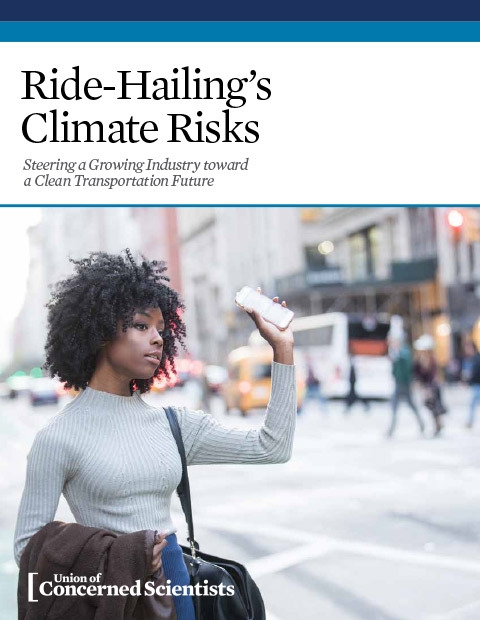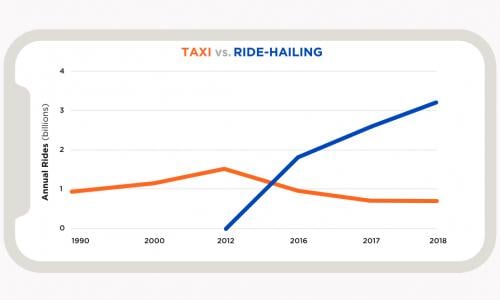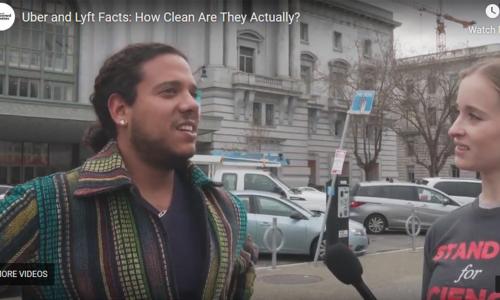Ride-hailing is an attractive option for many travelers, and can increase mobility for households who lack a private vehicle. Yet in communities across the country, ride-hailing is increasing vehicle travel, climate pollution, and congestion.
The explosive growth of ride-hailing services, including Uber and Lyft, is increasing climate pollution and urban congestion. As the climate crisis becomes even more urgent, it is more important than ever for the ride-hailing industry to contribute to a lower carbon, more sustainable transportation system.
Our analysis shows that ride-hailing trips today result in an estimated 69 percent more climate pollution on average than the trips they displace.
Fortunately, the industry can implement several strategies to address the negative impacts of ride-hailing and contribute to a low-carbon transportation future. It must move rapidly to electrify vehicles, increase pooled trips, and complement mass transit. Governments can support those efforts with smart policies that reduce pollution and support efficient, equitable transportation systems. And individuals can make informed choices among transportation options to reduce congestion and pollution, and encourage companies to offer cleaner options.
Downloads
Citation
Anair, Don, Jeremy Martin, Maria Cecilia Pinto de Moura, and Joshua Goldman. 2020. Ride-Hailing’s Climate Risks: Steering a Growing Industry toward a Clean Transportation Future. Cambridge, MA: Union of Concerned Scientists. https://www.ucsusa.org/resources/ride-hailing-climate-risks



